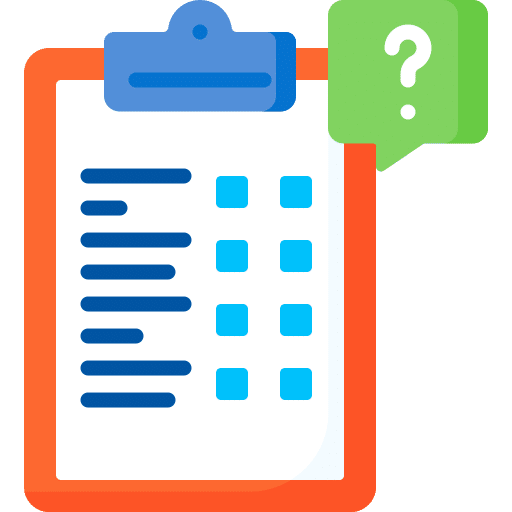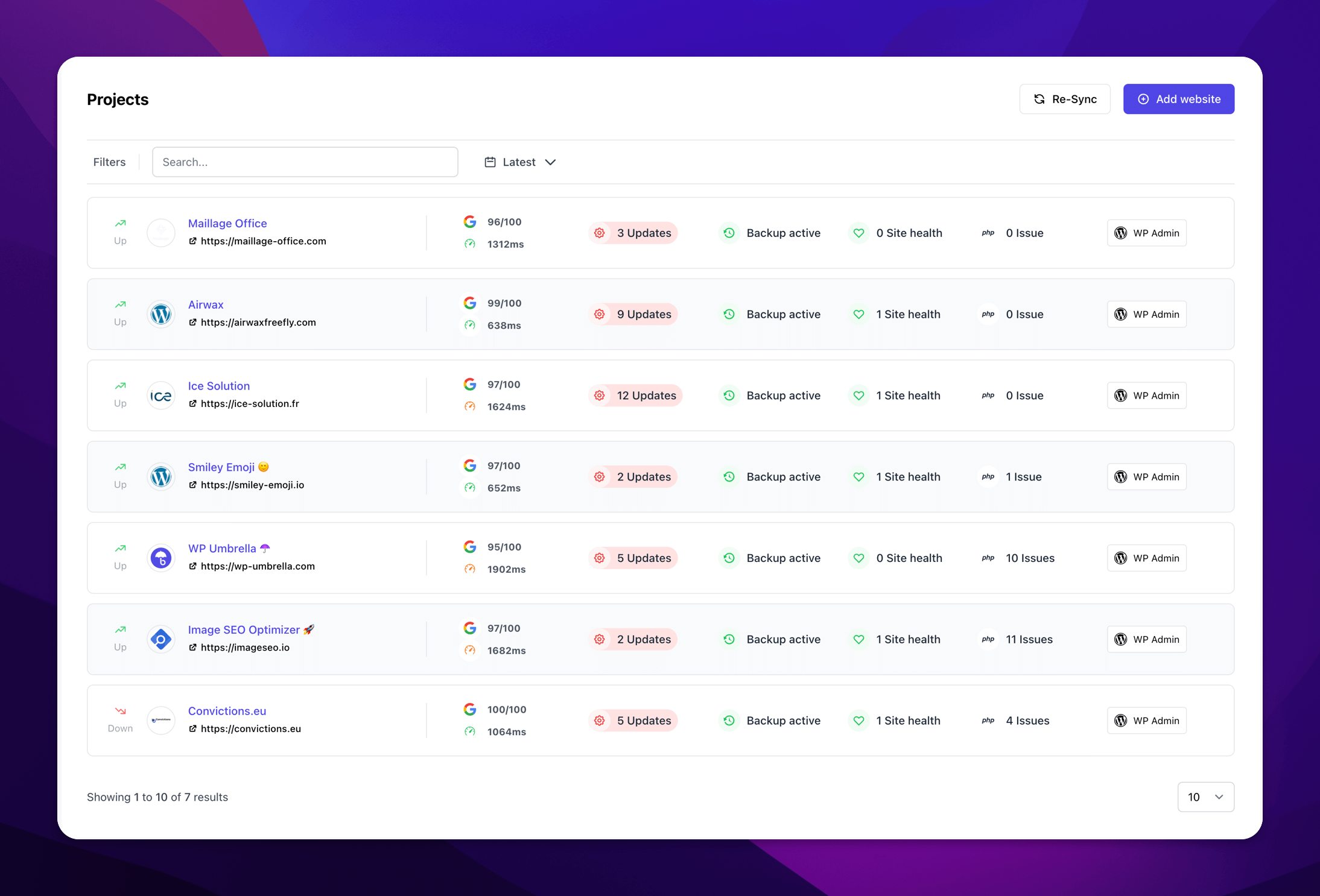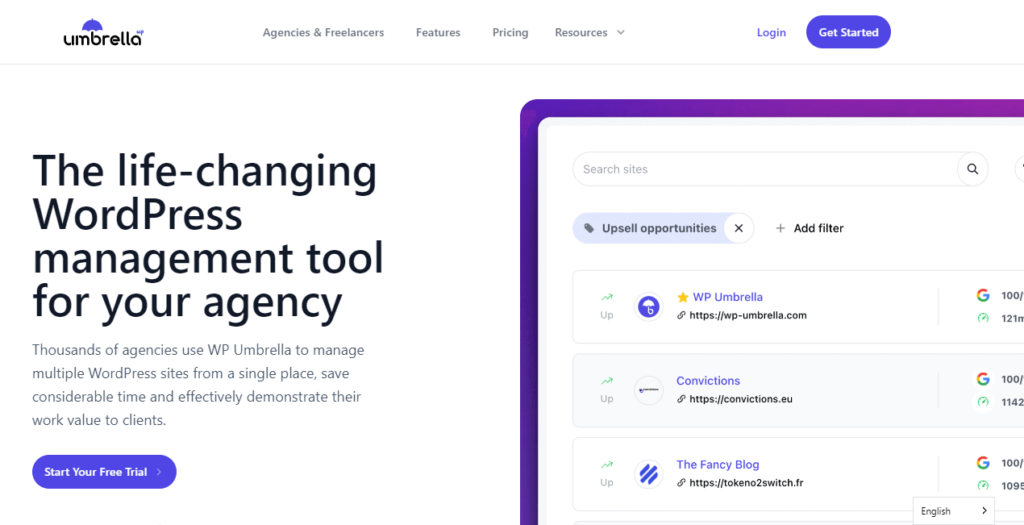The Ultimate Website Design Questionnaire: PDF Template Included

Working with a new client can be very exciting. You’re at the starting line of a new web design project, but just as you’re about to dive in, you realize that you’re not quite sure where to begin.
This is the reality for many web designers and web development agencies, especially novices, but it can be easily prevented by creating a detailed web design questionnaire.
This important document consists of a list of questions about your client’s expectations, business objectives, target audience, budget, and project timeline. However, that’s not an easy thing to do.
You have to find the right questions and format them in a way that will be easily understood by the client so you get everything that you need to start the project.
Never fear – in this article, we’ll guide you through crafting an effective web design questionnaire, and deep-dive into the key elements needed, exploring those all-important questions you should be including.
Key elements of a successful website design questionnaire
If you want to develop a compelling website design questionnaire, you’ll need an insightful and open-minded approach. Each question contributes to understanding your client’s needs and setting the stage for their expectations.
It’s not just about asking many questions but asking the right ones.
In these next sections, we’ll dissect each significant question, explaining its importance in guiding the design process.
Before we begin, however, it’s important to note that your initial questionnaire, while comprehensive, is part of an ongoing dialogue with the client. A design process guided by initial responses and following discussions ensures a web design that evolves with the client’s business needs.
Understanding your client’s business
To create a web design that mirrors the client’s vision and brand ethos, you need a deep, comprehensive understanding of their business.
Logically, the best first question is, “Can you share a brief history of your business?”
Making a website that looks great and helps your client’s business is like putting together a puzzle. You start by asking them what makes the brand special, what the customers like, what they offer that’s different, and who they’re up against.
Once you have the answers to these questions, you can start piecing together the end puzzle that will make up their new website.
Here’s how you can kickstart that conversation:
- Describe your business in a few sentences.
Encourage the client to give you a brief overview of their business. It’s an approachable way to dive into the client’s professional universe and understand their perception of their business.
- What specific products and services do you offer? Which of them are most popular or profitable?
This isn’t just about having a list of their offerings. It’s about understanding their portfolio and identifying what’s important to highlight in the design because of its popularity or profitability.
- What is your business’s mission, values, and unique selling proposition (USP)?
Knowing the heart of their business – their mission and values – along with their USP gives you an insight into the foundational elements that set their business apart. Use this insight to put emphasis on these unique aspects in the web design process.
- Could you tell us more about your target audience? Can you share details about their demographics, interests, and online behavior patterns?
Digging deep into who will be using the website will guide your approach to functional and aesthetic design elements. The more details you have about the audience’s age, gender, location, interests, and online habits, the better you can tailor the design.
- Who are your main competitors? What do you like or dislike about their websites?
A list of competitors gives you a window into the client’s industry. Ask what resonates with the client regarding their competitors’ sites – aspects they admire and perhaps would like to incorporate or avoid.
Ready to boost your productivity, impress your clients and grow your WordPress agency?
Install WP Umbrella on your websites in a minute and discover a new way to manage multiple WordPress sites.
Get Started for free
Confirming technical and design requirements
Imagine making a start on a project, only to find midway through that your client was looking for a feature-rich website while you were planning a minimalistic design. The result? Wasted resources and a dissatisfied client.
To avoid similar situations, take time to understand your client’s technical and design requirements.
Chances are, they already have a style guide and a preferred platform or CMS (Content Management System). Gaining this knowledge is essential when you’re building elements for specific feature requirements, design style preferences, color schemes, typography, and more.
This information will allow you to not only meet the client’s specifications but also to serve their objectives effectively.
Additionally, looking into the client’s technical capabilities and limitations, such as their hosting choices or comfort with back-end technologies, can help personalize your services and create a site the client feels comfortable managing.
Here is what you can ask:
- Do you have a preferred platform you want to use for your website?
This question is key to understanding the client’s technical comfort levels. A clear idea of the client’s ease with specific technologies will help you create a site they can manage confidently.
- What pages do you need on your website?
Knowing the required pages early on will help streamline the structure of the website and ensure that it serves all the client’s needs.
- What features does your website require to be successful?
Dive into the functionality expectations from the client’s end, as this will provide you with clear directives for executing the design and development process.
- What do you like and dislike about your existing website? Have you faced any obstacles with your current site?
Shed some light on the specific aesthetic likes and dislikes of the client while identifying any technical or functional pain points they want to avoid in the new design.
- What is your vision for the website design? Could you provide certain examples of websites you appreciate?
By inviting the client to visualize their preferences, perhaps through a template or reference, this question allows you to gather practical inputs about the client’s design expectations, providing further direction to your design strategy.
- What are your company branding guidelines?
Brand consistency contributes to a streamlined user experience across all touchpoints, making this question fundamental for aligning the website design with the broader corporate identity.
- What are your URL and hosting requirements? Do you need help with hosting migration or performance expectations?
Apart from understanding the client’s hosting plan and domain name needs, you’ll gain insights into whether you need to arrange these elements as a part of the project or offer additional assistance for improved performance or migration needs.
💡Tip: Maintain flexibility and openness to further discuss or clarify areas the client may find challenging. Understanding that this questionnaire is just a starting point rather than an exhaustive reference can help manage the client’s expectations effectively.
Assessing the scope of the project
A well-defined scope allows for a smooth project execution. It can guard against ‘scope creep,’ a common issue where projects expand beyond their original objectives, often leading to cost overruns and time delays.
Practical aspects such as website features, content requirements, third-party integrations, testing, or SEO considerations, when clearly outlined in the project scope, ensure that revisions are minimized, client expectations are met, and the project stays within budget.
Here are some important scope-related questions you might add to your website design questionnaire:
- Do you aim to refurbish the current website or create an entirely new one?
The answer to this question directly impacts the timeline and resources required for the project.
- What are the primary goals for your website?
This invites clients to share their vision for website functionality and its role in their business strategy.
- What planned milestone dates should we be aware of?
This enables you or your team, if you’re an agency, to manage time in sync with high-importance dates for your client and create a realistic timeframe that’s in accordance with the client’s budget.
- What is your allocated budget for the website?
Speaking of budgets, this will help assess the feasibility of the client’s expectations, and more so, it allows for an open conversation about potential budget variances or how unexpected costs will be handled.
- Would you like us to handle ongoing website maintenance, updates, and security?
This establishes whether your client expects a one-time project or a long-term partnership, thus helping you draft a comprehensive proposal.
By asking about the project scope in detail through a precise questionnaire, both you and your client can work together with a shared understanding of the project’s timeline, cost, scale, and required resources.
Downloadable PDF template for your website design questionnaire
To support your efforts as a web designer, we’ve created a comprehensive, ready-to-use PDF questionnaire template. It includes sections for client business information: their name and contact details, as well as all the important questions we just listed in the sections above.
You can use this directly or adapt it to develop a questionnaire that mirrors your specific business approach or even create it with your client’s brand colors to make a good impression.
Download our website design questionnaire (PDF, 200KB)
Next steps for streamlined web design projects
The benefits and importance of an effective web design questionnaire are undeniable, but they need to be done right.
Include key elements like separate sections for understanding your client’s business, clarifying technical and design specifications, and assessing the project’s scope. After all, your goal is to create a design that truly encapsulates the client’s brand, meets their specific needs, and eventually drives traffic and sales.
Remember that your questionnaire isn’t set in stone. It’s an evolving document that you should review periodically. Identify triggers for these reviews, like a freshly completed project, changing design trends or market dynamics, client feedback, etc. This approach will ensure your questionnaire remains contemporary, comprehensive, and effective.The web design questionnaire is just the beginning. As an agency or a freelancer, when you’re juggling multiple design projects, streamlined workflows can be a savior. With this in mind, let’s explore the role of digital tools like WP Umbrella, designed to aid project management.

WP Umbrella is a WordPress plugin that allows users to manage multiple different sites via a single dashboard and offers many useful features, such as automated site backups, maintenance reports, and powerful monitoring opportunities. As a designer, you can use this tool to simplify the common challenges of multiple-project management.
So, if you’re looking to spend less time grappling with project management and more time creating beautiful websites, WP Umbrella is definitely worth exploring. Sign up today to test the full feature set via a 14-day free trial. It’s time to step towards efficient, streamlined web design management.
Ready to boost your productivity, impress your clients and grow your WordPress agency?
Install WP Umbrella on your websites in a minute and discover a new way to manage multiple WordPress sites.
Get Started for free
